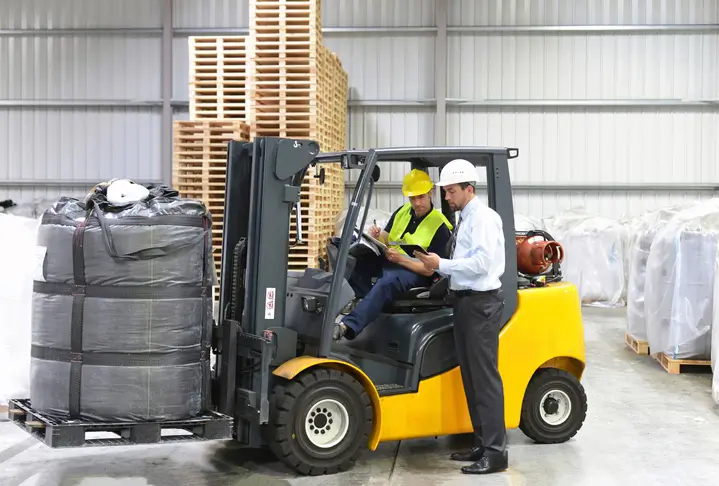What are OSHA Standards? (Everything You Need To Know)
OSHA or Occupational Safety and Health Administration is responsible for ensuring workplaces are secure in various industries. Now, the safety this organization oversees isn’t from any imminent danger, but rather from occupational hazards—hence the name.
Now, when OSHA was commissioned in 1972, workplace incidents averaged around 10.9 workers per 100. More than 50 years later, OSHA standards have brought that number down to 2.7 per 100 in 2020. So, what exactly does OSHA do?
That brings us to our topic, which is the basics of OSHA standards, and what they’re meant to provide to workers and employers. So, let’s dive right into it and understand the basics of OSHA standards, what they do, and why they’re important.
What are OSHA Standards?

OSHA Standards are a set of guidelines and rules that every workplace must enforce on their premises. These standards are to ensure a certain level of safety, which each employer should provide to their workers and keep them safe.
These standards are usually applied to the main four industries, which are also called the Big Four by OSHA, and they include:
- General
- Construction
- Maritime
- Agriculture
All of these OSHA standards ensure the safety of workers in their respective industries. That’s why OSHA has separate programs for them, but the three main industries, aka General, Maritime, and Agriculture have programs called General.
And while Construction safety has a separate set of programs for both the workers and supervisors. Their primary purpose is to ensure the safety of the worker and prevent any hazards in the workplace. While we’ll explore them in detail later, here are some examples of these standards:
- Hazard Communication: Labels and safety data sheets.
- Fall Protection: Guardrails, safety nets, and personal fall arrest systems.
- Respiratory Protection: Proper fit and respirator selection.
- Electrical Safety: Grounding, wiring, and protective equipment.
- Confined Spaces: Atmospheric testing and entry procedures.
- Machine Guarding: Shields and presence-sensing devices.
These guidelines indicate the basics of worker safety in specific workplaces. While it also depends on the variance of the industry, common guidelines, and standards remain the same, such as wearing protective headgear or respiratory masks.
These six pillars of the safety standards presented by OSHA remain the same throughout all industries. So, while you will find some chances in specific industries, such as construction, there won’t be any major elements changed within these specific values.
What Are Some Key OSHA Standards?

OSHA Standards are some of the regulations and guidelines to keep a workplace safe. They aren’t basic sets of rules, rather they are principles, that every workplace and worker should abide by. These guidelines are the basics of safety, hazard recognition, and prevention.
However, there are quite a few important standards, and it’s not easy to go over them in a short span of time. So, let’s talk about the key OSHA standards, which focus on the basics of safety training and hazard recognition/prevention in the workplace.
Here are the key OSHA standards to keep in mind, for both workers and employers:
- Respiratory protection guards against harmful airborne substances.
- Hazard communication ensures proper handling and chemical labeling.
- Electrical safety prevents accidents involving electrical equipment.
- Scaffolding maintains safe construction and usage standards.
- Lockout/tagout controls hazardous energy sources during maintenance.
- Confined spaces establish safety measures for enclosed areas.
- Fall protection prevents falls from elevated work surfaces.
- Machine guarding ensures machinery operates safely with guards.
- Personal Protective Equipment (PPE) provides necessary worker protection gear.
- Excavation and trenching implement safety protocols for trench work.
These are the most focused areas of safety concerns and hazard prevention in OSHA standards. However, there are constant failures to uphold or meet these standards as well. That’s why, OSHA has strict guidelines about punishing the failure to meet these requirements too.
Now, OSHA has specific standards to prevent mishaps with the most commonly violated standards. As mentioned before, personal protection and proper use of equipment are necessary. That’s why, OSHA mentions the following ten as the most violated standards in every industry:
- Failures to regularize fall protection.
- Lack of machine maintenance or problems with machine guarding.
- Shortcomings in hazard communication or protocol.
- Failures regarding respiratory protection.
- Bad scaffolding in construction or general industries.
- Control, or lack thereof the hazardous energy/fuel.
- Lack of ladder inspection or ladder-related incidents.
- Industrial trucks or vehicular failure/problems (Caused by lack of maintenance).
- Fall protection training, or lack thereof.
- Personal protective gear, i.e., eye and face protection.
These ten common problems occur quite frequently and are among the top 10 most cited incidents in recent years.
Why Organizations Should Understand OSHA Standards

Worker safety and ensuring a safe working environment is one of the top necessities in OSHA guidelines. Any workplace that fails to meet these standards will be subject to some sort of penalty or punishment.
Usually, organizations or employers who fail to meet such guidelines are subjected to various punishments, such as:
- Fines and monetary penalties for safety violations;
- Citations are formal notices of non-compliance issued;
- Litigation involves legal action against non-compliant organizations;
- And shutdowns, which usually mean temporary closure for severe safety breaches.
That’s why it’s important for workplaces to ensure that they are thoroughly understanding OSHA standards, and implementing rules to meet the set regulations.
Why Workers Should Understand OSHA Standards

Workplace safety isn’t just the responsibility of an employer, but a worker as well. When an employer/organization provides workplace safety training, it’s up to the workers and supervisors to uphold those standards.
And that’s why it’s important that they understand OSHA standards, and implement them. The benefits of doing this include:
- Understanding OSHA standards helps workers recognize hazards and protect themselves;
- Knowledge of safety protocols reduces the risk of workplace accidents;
- Ensures both individual and employer compliance with regulations;
- Promotes the use of proper protective equipment and safeguards against health risks;
- Workers who understand OSHA standards are empowered to advocate for safer work conditions;
- It can also enhance job security and protect against potential liabilities.
Therefore, it’s equally important, if not more, for the workers to understand OSHA standards and ensure compliance.
How To Ensure Everyone in a Workplace Follows OSHA Standards

There are quite a few ways to ensure that your workplace and workers follow a strict routine to abide by the OSHA standards. OSHA standards aren’t exactly rocket science, but they can be difficult to keep up with. So, here are four key tactics that workplaces take to ensure everyone follows them:
Providing Safety Training
Providing safety training to workers and supervisors is one of the easiest ways to ensure everyone follows OSHA Standards.
The two main programs that companies should provide are the OSHA 10 for workers and the OSHA 30 for supervisors. These two programs will ensure the safety of workers and the workplace.
Awareness Seminars
There are continuous changes in the OSHA Standards for construction and general industry. That’s why it’s important to keep the employees up to date with these changes by doing awareness seminars.
These safety awareness seminars can help the workers understand OSHA Standards and follow them properly.
Regulating Safety Training Certificates
Regulating the basic safety training for each and every employee can also ensure safety standards are upheld in a workplace. Therefore, workplaces should always ask for OSHA 10 or OSHA 30 training and DOL cards from workers.
Ensuring a Safe Work Culture
It’s important to inspire and uplift workers by rewarding safe conduct. This can encourage employees to take more interest in OSHA guidelines and standards.
Conclusion
There you have it, the list of OSHA Standards and what makes them important. While all of the OSHA Standards and regulations are necessary, it’s important to focus on the right ones and provide training to workers about the basic standards. This can ensure a workplace stays up to date with modern safety standards and abides by OSHA regulations and guidelines properly.







